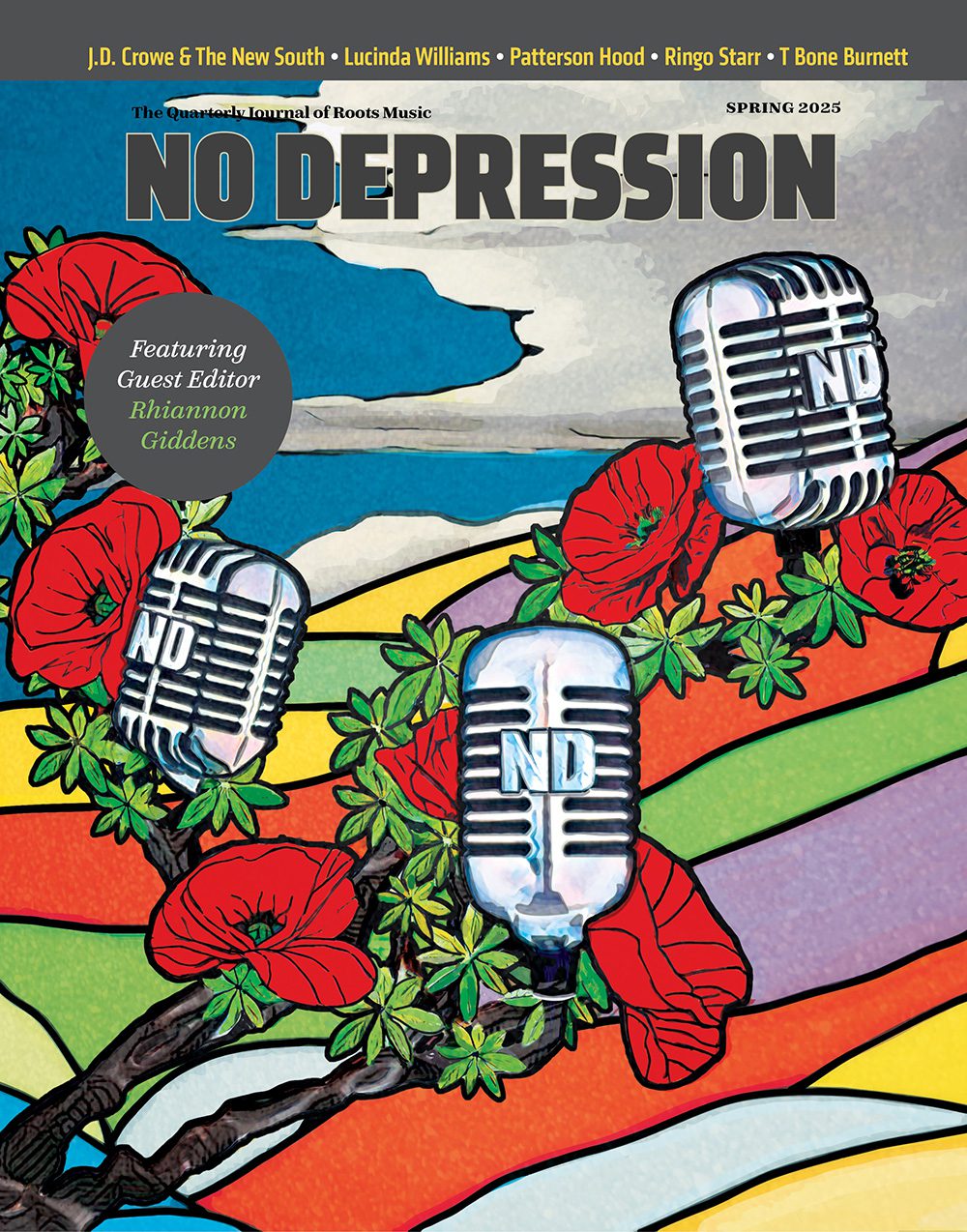Rex Hobart – The man in the mirror
Sandoval had been known around town for Neil Young-influenced “Ready For The Country”-ish rock, with the sounds of Solomon Hofer’s pedal steel relatively buried behind the guitars of J.B. Morris and the drumming of Vincent Floyd. Those three members first jammed with Hobart, then joined the newly dubbed Misery boys, the name partly a salute to the way natives pronounce the name of their home state.
Today, Hobart understandably looks at the fourteen tracks on the band’s 1999 debut Forever Always Ends as early, self-conscious experiments. Taking Hank Williams as a vocal model (and the Roy Acuff Southeastern side rather than the deeper Ernest Tubb honky-tonk side of Hank, at that), he consistently throws his voice into a high, ready-to-break register that’s clearly a strain. The band, meanwhile, had not arrived ready-made for the steady but propulsive dance sparking rhythms of hard honky-tonk, which is virtually the opposite of math-rock and very different from the needs of Neil Young rock, too.
The songwriting talent is evident, but with a circumscribed focus on Honky-Tonk Subjects 101: buying too many beers, crying in them, feeling guilty, bemoaning the girl that’s gone. These may be typical places to start, but they’re just a segment of the Tubb-to-Haggard oeuvre, which covers a lot more subject matter than newcomers may notice quickly.
Through connections made in the Giant’s Chair days, production of the first Misery Boys discs was supervised by a man who knew honky-tonk’s demands much more intimately. Lou Whitney is known almost as much as an ace producer as he is as ringleader of the Morells and the Skeletons, a couple of well-traveled twang and rock bands based in Springfield, Missouri.
“One of Lou’s favorite sayings,” recalls Hobart, “was ‘Let’s get something here that we can hang our hat on.’ He helped us realize that the beat of the song is what people are going to hold onto, and dance to. We didn’t know how to record this stuff, so we just sort of said to him, ‘Here are our songs; make us sound like a country band!'”
When the Whitney tracks (supplemented by a few additional cuts) were released in 1999, the band landed spots on Bloodshot showcases at SXSW and CMJ, for instance, playing to fans of the Waco Brothers or Trailer Bride. They were not, of course, designed to provide the raucous, rebellious cowpunk many of those bands’ fans were seeking. They also weren’t necessarily providing the precise range of pleasures hard-core honky-tonkers held dear. But while this in-between Misery Boys position might seem a recipe for trouble, somehow they found a fertile middle ground.
More of the rock crowd that congregated at the band’s K.C. home away from home, Davey’s Uptown bar, seemed to hang around now, Hobart recalls, “whether it was to laugh at these freaks who didn’t know what they were doing, or because they were hearing a sound that they hadn’t heard in a long time.” And at the Bloodshot shows, they seemed to peel off fans of both insurgent country punk and more retro styles.
“I like to think that we’re more than a retro band,” Hobart says, “but I don’t mind being thought of as a fairly neo-traditionalist affair, because we are — with the kinds of sounds that just seem to resonate for us.”
It was a more confident band that made the second CD, Spectacular Sadness, released in 2000. Hobart’s singing and writing had come under the influence of George Jones, maybe a little blatantly, but heading there opened new doors to depth. With the shuffles and barroom weepers (the Roger Miller-like “Here Comes Nothing”, the Jones-influenced “The One & Only You”) came also a new sound in countrypolitan-influenced ballads placed at the end of the album.
“When you start to write and play in any style of music, your stuff is going to be pretty rudimentary,” Hobart acknowledges. “With songs like ‘Lets Keep Lying Here’, which I’m particularly proud of, I was pushing to see where we could take that more challenging, acoustic, and more countrypolitan-influenced kind of music.”
Dropped into a new, lower register, Hobart’s voice became a much more expressive and flexible front end for increasingly straight-ahead honky-tonk music. As fellow musician Phil Wilder put it, “After a while, Rex realized that what they were doing was good enough to stand on its own; it wasn’t a joke anymore.”
The new interest in balladry contributed to the departure of original drummer Vincent Floyd. He was replaced by T.C. Dobbs, a former jazz drummer turning “shuffle freak” who added new finesse to the proceedings. The second album was a conspicuous step forward. Solomon’s pedal steel runs began to power the band’s pulse, and the music flowed more often.
There was also fresh psychological insight in the lyrics. The distance traveled is marked in the song “I’m Not Drunk Enough (To Say ‘I Love You’)”. Hobart nails the attitude that seems to lurk in part of his own audience: adopting honky-tonk interest or style with ironic removal, with its booziness as a cover deemed necessary to speak the emotional truth. Not incidentally, the cut begins with an instrumental intro that turns on a dime to the rhythm of the verse — shades of the turns from some classic Ray Price violin intros.




